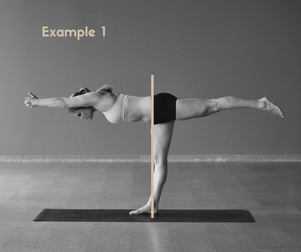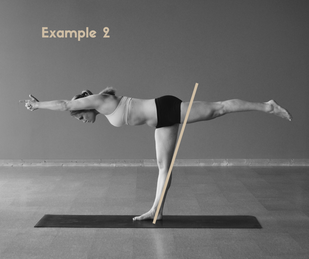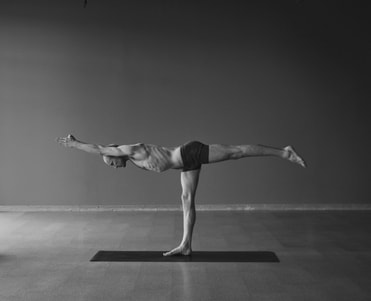 Hyperextension is when a joint moves beyond its normal range of motion. Here we'll focus on hyperextension of the knee for the following reasons: 1) it is common for people to hyperextend their knees in asana classes, 2) this can be detrimental to the health and stability of the knee joint. Let's look at why this can be problematic, and how we can decide whether we, or our students, are hyperextending. (Hint, it's not actually the knee we should look at!) Hyperextension on its own is not necessarily bad for joints. However, it becomes potentially injurious when we're bearing weight. In other words, if we were to simply straighten our knees as much as possible while sitting, we may hyperextend our knees. Because we are not bearing any weight, this will most likely be safe for the joints. When we stand on one leg, as in balancing poses, we put all of our body's weight on one leg. This doubles the load that leg is carrying making the force is much greater. This is where we can start to strain the tendons and ligaments behind the knee.  Since we are considering the knee, it's easy to think we should look at the knee. However, this is not the easiest way to spot hyperextension. Instead, we should look at the relationship of our shin (tibia) to our heel (calcaneus). You can see in Examples 1 & 2, that the lower leg is at an angle when compared to the foot. You can then see in Example 1, that the knee is behind the foot. This is hyperextension. If you compare this to the picture at the very top of the page, you can see that the shin is more or less, perpendicular to the foot. This is much more stable in balance, and will not put strain on the tendons or ligaments of the knee. If you are wondering if you hyperextending, use this as your guide. If you are a teacher, look at the angle of the shin into the foot. This will guide you far more easily than looking at the knee. Finally, remember that hyperextension is something to keep a look out for when the joint is bearing weight. Whenever we are sitting or lying down, and not bearing weight, it is less of a concern.
0 Comments
Leave a Reply. |
AUTHORSScott & Ida are Yoga Acharyas (Masters of Yoga). They are scholars as well as practitioners of yogic postures, breath control and meditation. They are the head teachers of Ghosh Yoga.
POPULAR- The 113 Postures of Ghosh Yoga
- Make the Hamstrings Strong, Not Long - Understanding Chair Posture - Lock the Knee History - It Doesn't Matter If Your Head Is On Your Knee - Bow Pose (Dhanurasana) - 5 Reasons To Backbend - Origins of Standing Bow - The Traditional Yoga In Bikram's Class - What About the Women?! - Through Bishnu's Eyes - Why Teaching Is Not a Personal Practice Categories
All
Archives
May 2024
|







 RSS Feed
RSS Feed